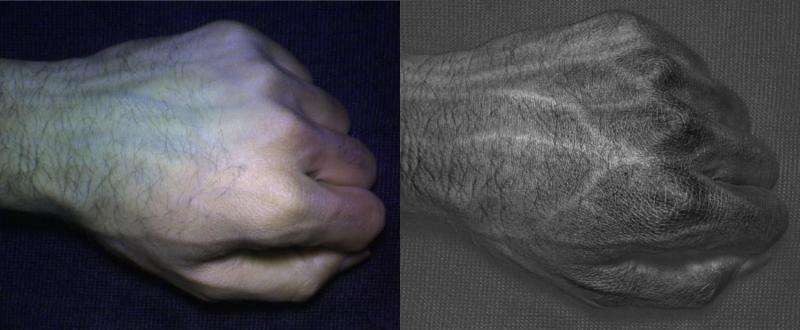
“It’s not there yet, but the way this hardware was built you can probably imagine putting it in a mobile phone,” said Shwetak Patel, Professor of Computer Science & Engineering and Electrical Engineering at the University of Washington.
“With this kind of camera, you could go to the grocery store and know what produce to pick by looking underneath the skin and seeing if there’s anything wrong inside. It’s like having a food safety app in your pocket,” Patel said.
Hyperspectral imaging is used today in everything from satellite imaging and energy monitoring to infrastructure and food safety inspections, but the technology’s high cost has historically limited its use to industrial or commercial purposes. The UW and Microsoft Research team wanted to see if they could make a relatively simple and affordable hyperspectral camera for consumer uses.
“Existing systems are costly and hard to use, so we decided to create an inexpensive hyperspectral camera and explore these uses ourselves,” said Neel Joshi, a Microsoft researcher who collaborated on the project. “After building the camera we just started pointing it at everyday objects—really anything we could find in our homes and offices—and we were amazed at all the hidden information it revealed.”
How it Works
A typical camera divides visible light into three bands—red, green and blue—and generates images using different combinations of those colors. But cameras that utilize other wavelengths in the electromagnetic spectrum can reveal invisible differences.
Near-infrared cameras, for instance, can reveal whether crops are healthy or a work of art is genuine. Thermal infrared cameras can visualize where heat is escaping from leaky windows or an overloaded electrical circuit.
“When you look at a scene with a naked eye or a normal camera, you’re mostly seeing colors. You can say, ‘Oh, that’s a pair of blue pants,'” said lead author Mayank Goel, a UW computer science and engineering doctoral student and Microsoft Research graduate fellow. “With a hyperspectral camera, you’re looking at the actual material that something is made of. You can see the difference between blue denim and blue cotton.”

HyperCam, which uses the visible and near-infrared parts of the electromagnetic spectrum, illuminates a scene with 17 different wavelengths and generates an image for each.
One challenge in hyperspectral imaging is sorting through the sheer volume of frames produced. The UW software analyzes the images and finds ones that are most different from what the naked eye sees, essentially zeroing in on ones that the user is likely to find most revealing.
“It mines all the different possible images and compares it to what a normal camera or the human eye will see and tries to figure out what scenes look most different,” Goel said.
One remaining challenge is that the technology doesn’t work particularly well in bright light, Goel said. Next research steps will include addressing that problem and making the camera small enough to be incorporated into mobile phones and other devices, he said.
Courtesy of the University of Washington.